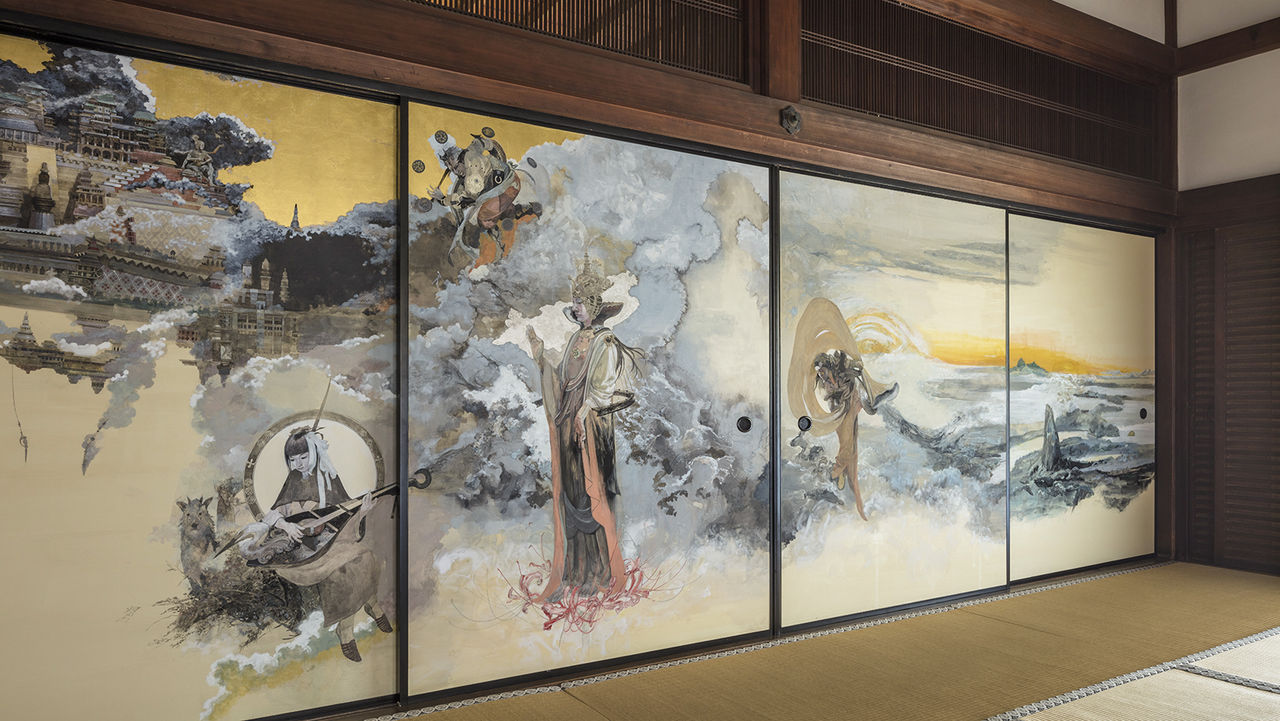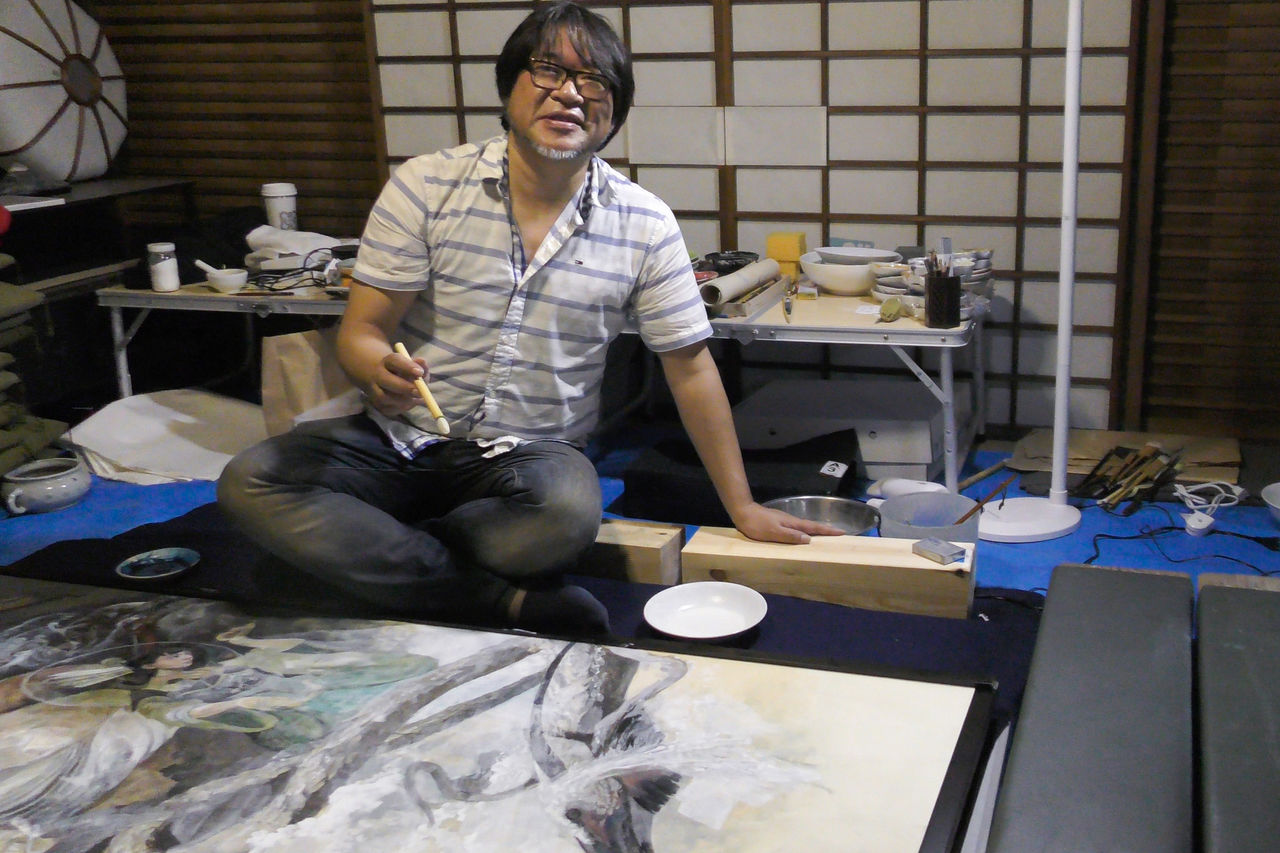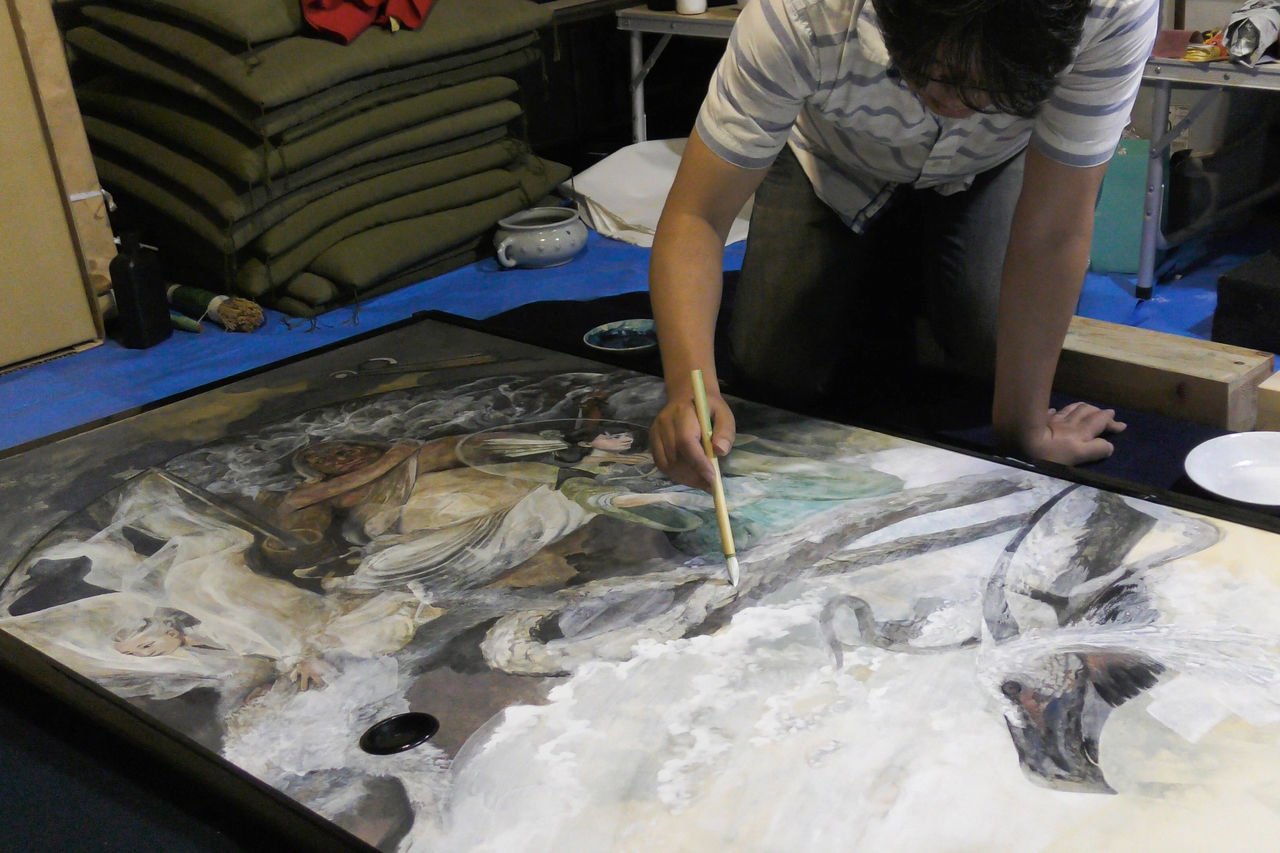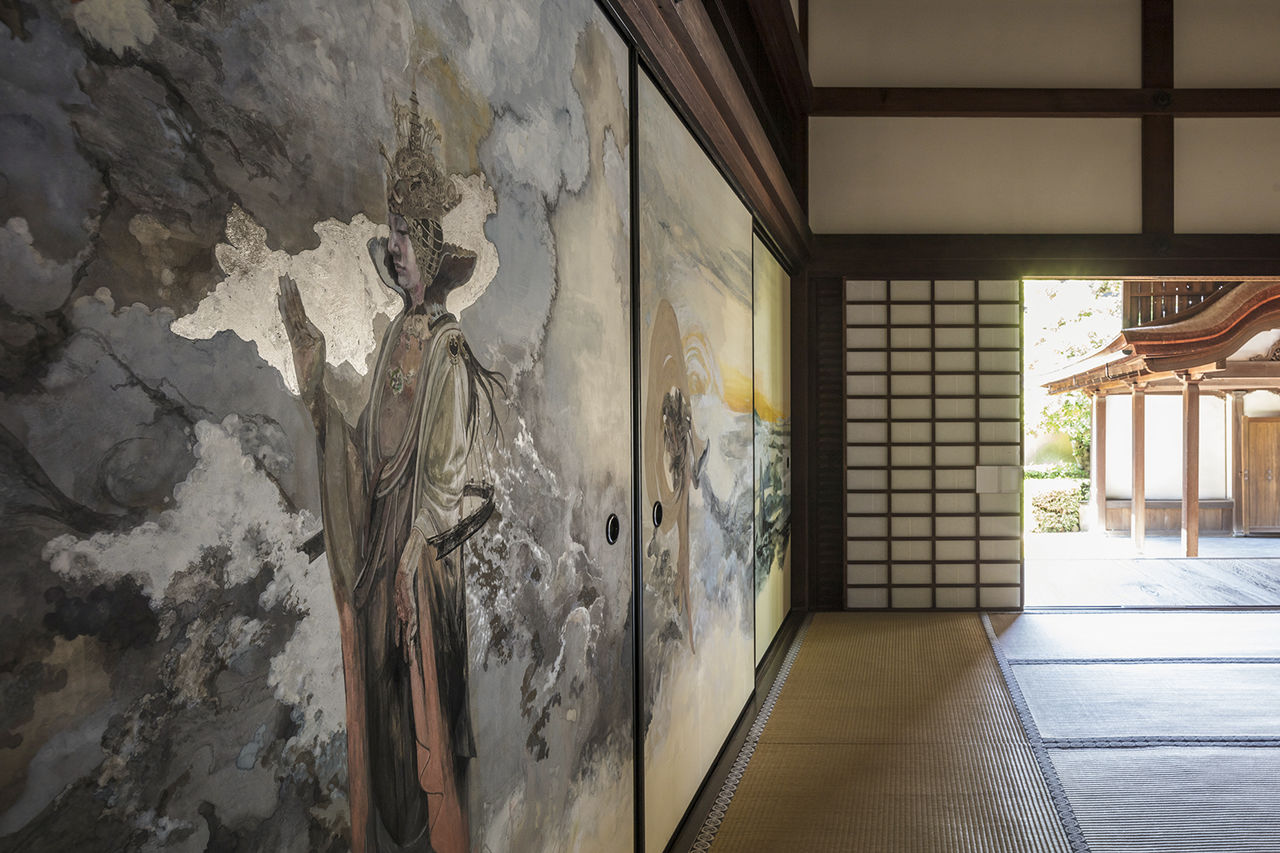
Kamikokuryō Isamu’s Pure Land: Painting Shinjuan’s Celebrated Sliding Doors
Guideto Japan
- English
- 日本語
- 简体字
- 繁體字
- Français
- Español
- العربية
- Русский
“A Hundred Spots I’m Still Not Happy With”
After performing my evening duties as a secular member of the Buddhist priestly community at Daitokuji, the famed Kyoto temple complex, I return to the main hall of Shinjuan, where I am a live-in apprentice. There, the sharp scent of smoke from mosquito coils assails my nostrils. When I look in the guest room, suspecting that work is still going on, sure enough, Kamikokuryō Isamu is hunched over, still diligently painting. A photographer there to take photos for a publicity brochure is hard-pressed to decide when it would be best to take pictures as he observes the artist at work, with no end in sight.
Having served as art director on the megahit Final Fantasy video game series, Kamikokuryō became acquainted with Daitokuji’s head priest Yamada Sōshō at a collective Zen session in Tokyo. Yamada asked Kamikokuryō to paint a set of eight of the fusuma sliding doors in Shinjuan, one of the complex’s subtemples, assigning the artist the theme of a “future vision of Kannon,” the bodhisattva Avalokiteśvara. Kamikokuryō started work on his illustrations in autumn 2017. As of August 2018, with barely a month to go before the public viewing commences, the artist is still not finished.
 “Purus Terrae Jōdo” the pure land of Buddhist mythology, in the main hall’s Rei no Ma room, by Kamikokuryō Isamu.
“Purus Terrae Jōdo” the pure land of Buddhist mythology, in the main hall’s Rei no Ma room, by Kamikokuryō Isamu.
Sometimes, the artist’s working space is remarkably lively. He has had two dancers from the musical group Exile perform for him at Shinjuan. The movements of the Fūjin (wind god) and Raijin (thunder god) in the illustrations are undoubtedly taken from the movements of these performers.
He also asked an attractive female employee at a bar where he went with Yamada to be the model for Kannon. He even prevailed upon Yamaga Hiroyuki, producer of Neon Genesis Evangelion and another of the fusuma illustration artists, to be the model for his illustration of Fudō Myōō, the God of Fire. Viewers are sure to be engrossed by this unique view of life among gods and the sheer scope of the artist’s vision, which seems to strain to encompass outer space itself.
Such lively scenes are fleeting, however. Today, as usual, Kamikokuryō works alone, putting brush to paper with a harsh expression on his face. He says there are 100 parts that he still isn’t satisfied with. Also, having just turned 48, he gets a faraway look in his eye as he mutters that the work isn’t likely to be finished before he turns 60.
 Kamikokuryō working on his fusuma painting in the guest room.
Kamikokuryō working on his fusuma painting in the guest room.
A Mission and a Sense of Pride
Even this acclaimed top art director lived through a period of obscurity. In his twenties, he cried tears of frustration at his work being overlooked.
“I thought my illustrations were the best in the world,” he says by way of preamble. “People just had to know that. What can I tell you? I was young.”
Making ends meet with part-time jobs, he gave priority to painting materials over food, and kept on creating. While he submitted works to competitions and won prizes, it was easily a decade before he was able to support himself with his art.
“Having this talent for making pictures and not making some kind of social contribution would be just lame,” he says.
 Putting the finishing touches on the Fudō Myōō figure that fellow artist Yamaga posed for.
Putting the finishing touches on the Fudō Myōō figure that fellow artist Yamaga posed for.
In speaking of contributing through his talent, Kamikokuryō also imparts his belief that he has been given a mission. Self-confident he may be, but not to the extent of arrogance. The sight of him stoically confronting his own work, getting to grips with the fusuma painting, gives one an overwhelming sense of the artist’s pride and determination not to compromise.
I ask a somewhat unkind question: “You mentioned the confidence of your youth, but isn’t it true that you think of your art as the best in the world, even now?” By way of reply, the artist only chuckles. The answer to this question will likely be up to the viewers of his art.
 “Future Kannon,” in harmony with the historic temple.
“Future Kannon,” in harmony with the historic temple.
Related › New Art in an Old Setting: The Shinjuan Painting Project at Daitokuji, Kyoto
Daitokuji Shinjuan Special Viewing
- Dates: September 1 to December 16, 2018 (closed October 19–21)
- Hours: 9:30 am to 4:00 pm (last entry)
- Fee: Adults ¥1,200, junior high and high school students ¥600, ages 12 and under free (when accompanied by an adult). Note: preschool age children will not be admitted to the Tsūsen’in study or the Teigyokuken tea ceremony room.
- Access: from Kyoto station, take the Kyoto municipal subway Karasuma line to Kitaōji. Transfer there to Kyoto city bus routes 1, 101, 102, 204, 205 or 206 and get off at Daitokuji-mae. From there, 7 minutes on foot (total travel time about 35 minutes).
- Daitokuji Shinjuan special viewing website
- Crowdfunding website for Kyoto Shinjuan (Japanese language only)
(Originally published in Japanese. Photos of fusuma paintings by Asano Satoshi; photos of Kamikokuryō Isamu by Tsunoda Ryūichi.)